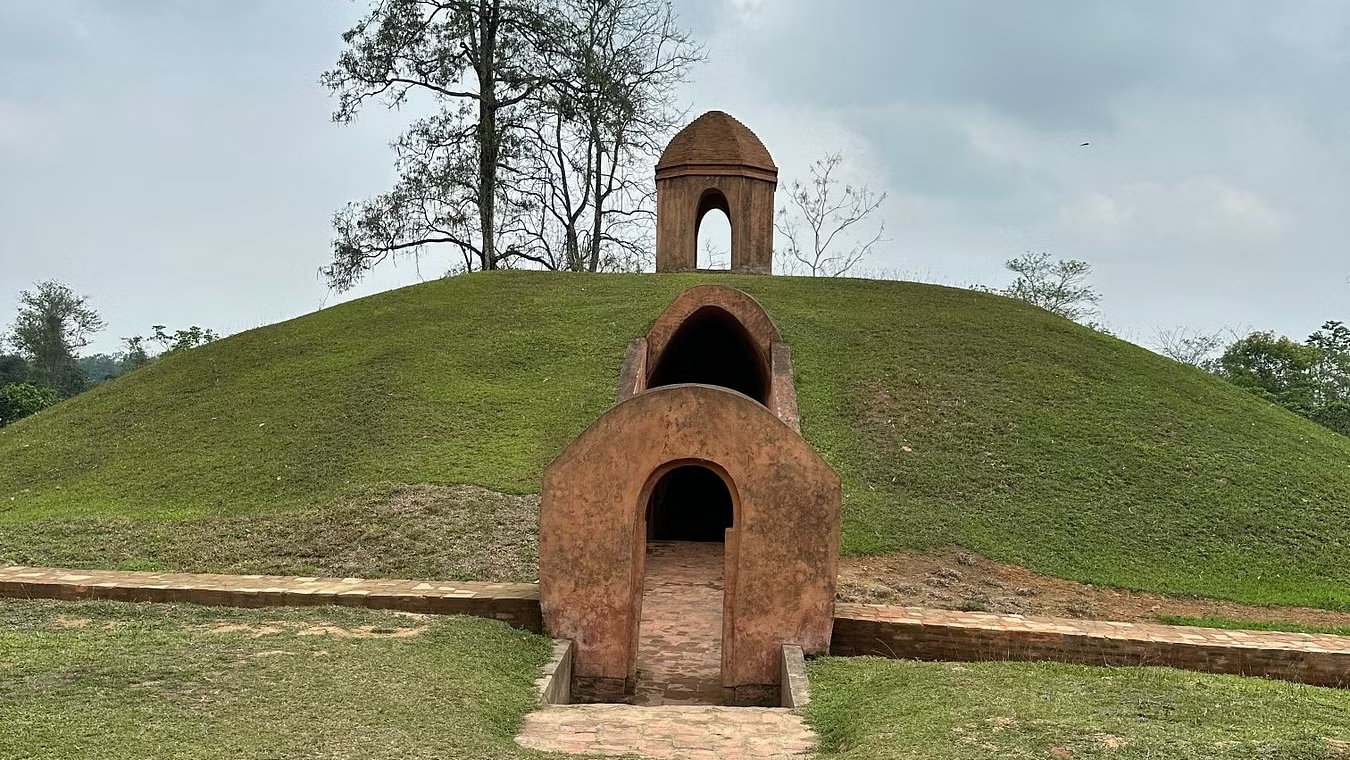Important Facts For Prelims
Assam's Moidams to be Considered for World Heritage List
- 23 Jul 2024
- 5 min read
Why in News?
Recently, the 'Moidams’ of Ahom dynasty have been proposed for inclusion in the World Heritage Sites list during the 46th session of the World Heritage Committee.
- India will host this session for the first time in July 2024 in New Delhi.
- Currently, UNESCO's World Heritage list includes 1,199 properties from 168 countries.
What were Moidams?
- The Moidams represent the late medieval (13th-19th century CE) mound burial tradition of the Tai Ahom Dynasty of Assam.
- These were primarily constructed using earth, bricks, and stone. The outer structure typically consisted of a mound of earth, often surrounded by a brick or stone wall.
- They are the resting place of royal families in Assam’s Charaideo district.
- It enshrines the mortal remains of the members of the Ahom royalty, who used to be buried with their paraphernalia.
- After the 18th century, the Ahom rulers adopted the Hindu cremation method and began entombing the cremated bones and ashes in a Maidam at Charaideo.
- These burial systems of the Ahom dynasty are comparable to the royal tombs of ancient China and the Pyramids of the Egyptian Pharaohs.
What are the Key Facts About Ahom Kingdom?
- About:
- The Ahom kingdom was established in 1228 in Assam's Brahmaputra valley and maintained its sovereignty for 600 years.
- It was founded by the 13th-century ruler Chaolung Sukapha in 1253.
- Charaideo was their initial capital, located over 400 km east of Guwahati.
- The Ahom dynasty ruled for approximately 600 years until Assam was annexed by the British in 1826 through the Treaty of Yandaboo.
- Political Setup:
- Ahoms created a new state by suppressing the older political system of the bhuiyans (landlords).
- The state depended upon forced labour, known as paiks.
- Society:
- Ahom society was divided into clans or khels. A khel often controlled several villages.
- Ahoms worshipped their own tribal gods, yet they accepted the Hindu religion and the Assamese language.
- However, the Ahom kings did not completely give up their traditional beliefs after adopting Hinduism.
- Military Strategy:
- The full contingent of the Ahom Army consisted of infantry, navy, artillery, elephantry, cavalry and spies.
- The main war weapons consisted of bows and arrows, swords, Javelins, discus, guns, match-locks and cannons.
- The Ahom soldiers were experts in guerilla fighting. They also learnt the technique of constructing boat bridges in the Brahmaputra.
- The Ahom navy, led by Lachit Borphukan, defeated the Mughal forces commanded by Ram Singh I during the reign of Aurangzeb at the Battle of Saraighat in 1671.
- The Lachit Borphukan gold medal is awarded to the best cadet from the National Defence Academy.
- The medal was instituted in 1999 to inspire defence personnel to emulate Borphukan’s heroism and sacrifices.
- The Lachit Borphukan gold medal is awarded to the best cadet from the National Defence Academy.
- The full contingent of the Ahom Army consisted of infantry, navy, artillery, elephantry, cavalry and spies.
What are UNESCO’s World Heritage Sites?
- A World Heritage Site is a place that is listed by UNESCO for its special cultural or physical significance.
- The list of World Heritage Sites is maintained by the international 'World Heritage Programme', administered by the UNESCO World Heritage Committee.
- This is embodied in an international treaty called the Convention concerning the Protection of the World Cultural and Natural Heritage, adopted by UNESCO in 1972.
- India has 42 World Heritage Sites (34 cultural, 7 natural, and 1 mixed site). The latest additions are Santiniketan (2023) and the Sacred Ensembles of the Hoysalas (2023).
UPSC Civil Services Examination, Previous Year Question (PYQ)
Prelims:
Q. Which one of the following National Parks has a climate that varies from tropical to subtropical, temperate and arctic? (2015)
(a) Khangchendzonga National Park
(b) Nandadevi National Park
(c) Neora Valley National Park
(d) Namdapha National Park
Ans: (d)
Mains:
Q. What was the difference between Mahatma Gandhi and Rabindranath Tagore in their approach towards education and nationalism? (2023)







